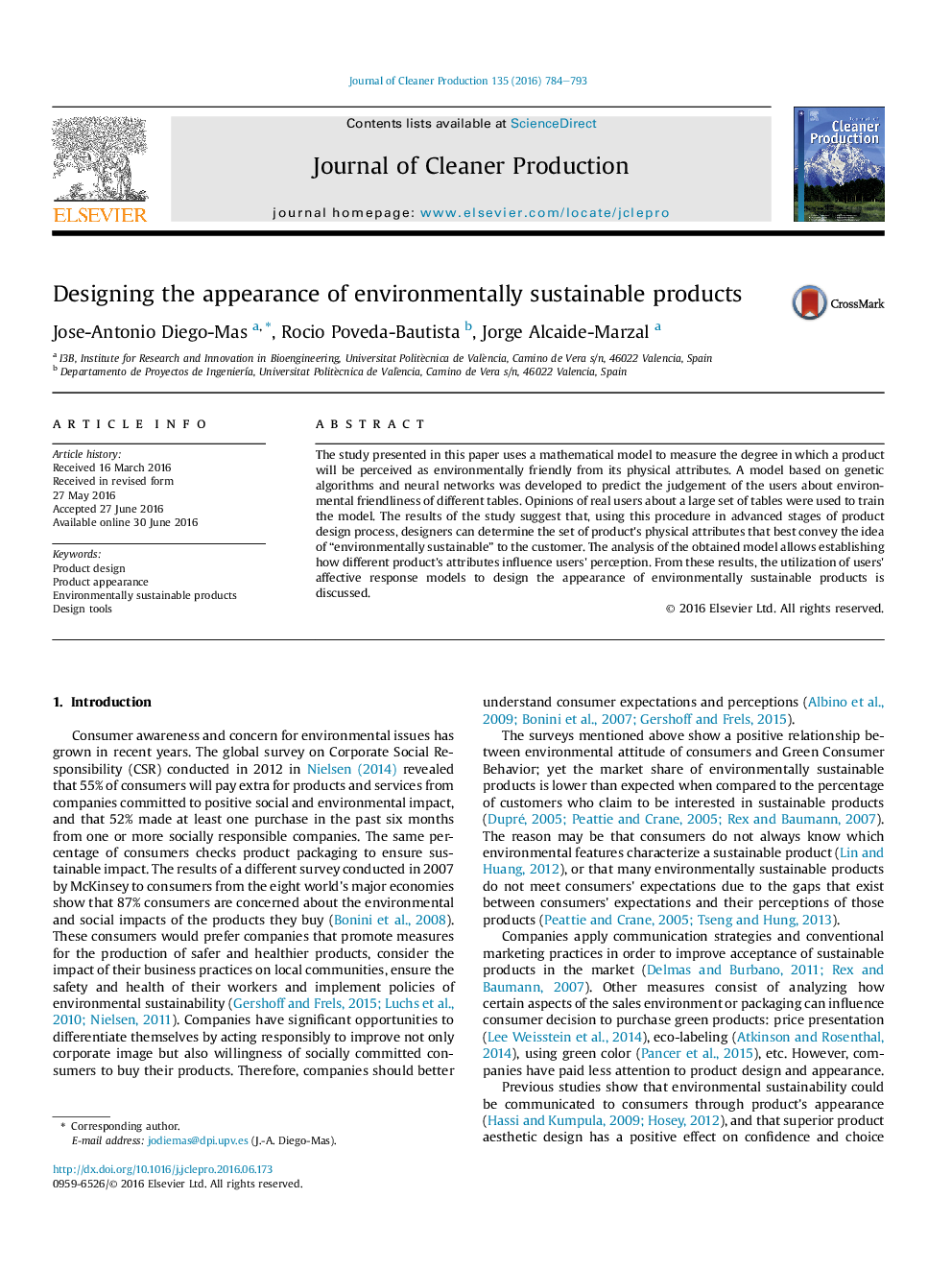| Article ID | Journal | Published Year | Pages | File Type |
|---|---|---|---|---|
| 8101274 | Journal of Cleaner Production | 2016 | 10 Pages |
Abstract
The study presented in this paper uses a mathematical model to measure the degree in which a product will be perceived as environmentally friendly from its physical attributes. A model based on genetic algorithms and neural networks was developed to predict the judgement of the users about environmental friendliness of different tables. Opinions of real users about a large set of tables were used to train the model. The results of the study suggest that, using this procedure in advanced stages of product design process, designers can determine the set of product's physical attributes that best convey the idea of “environmentally sustainable” to the customer. The analysis of the obtained model allows establishing how different product's attributes influence users' perception. From these results, the utilization of users' affective response models to design the appearance of environmentally sustainable products is discussed.
Keywords
Related Topics
Physical Sciences and Engineering
Energy
Renewable Energy, Sustainability and the Environment
Authors
Jose-Antonio Diego-Mas, Rocio Poveda-Bautista, Jorge Alcaide-Marzal,
